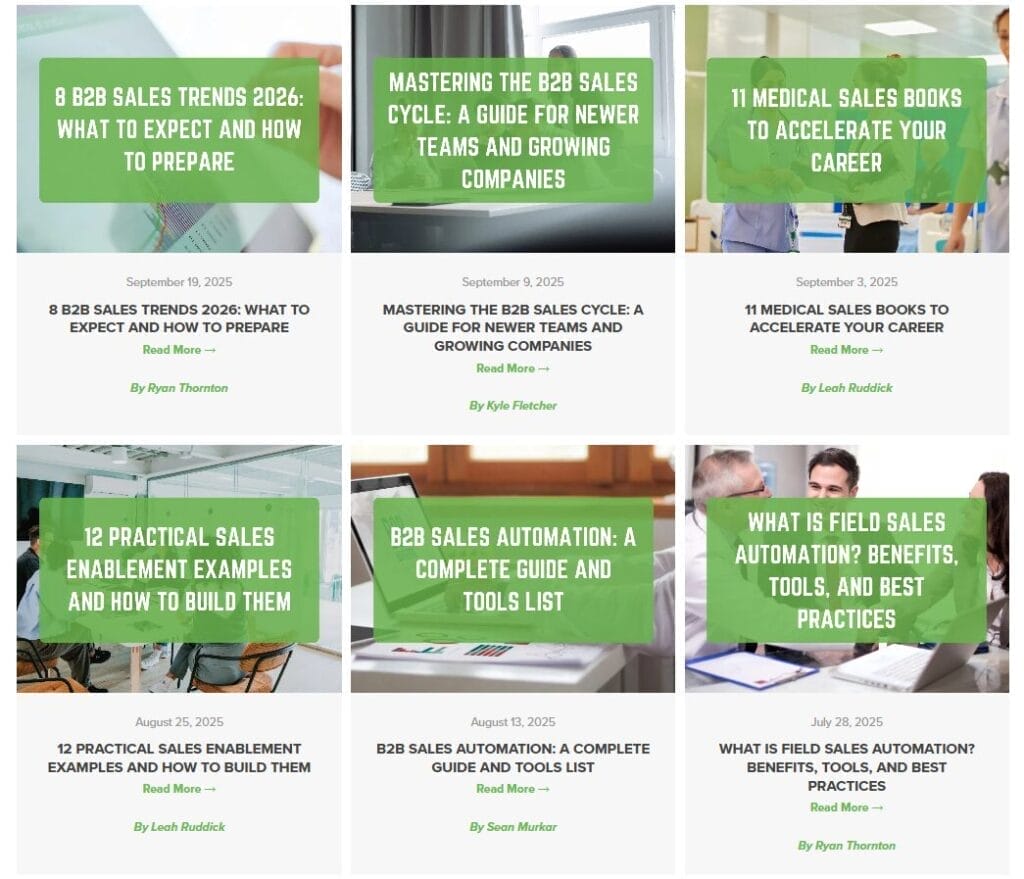Lead qualification criteria helps sales teams separate genuine opportunities from early interest, but many teams struggle with knowing which signals matter most. A strong set of criteria gives reps the clarity to focus on leads with real potential, improve forecasting accuracy, and move high intent buyers through the funnel with confidence.
When these indicators are clear and consistently applied, the entire sales process becomes more predictable and efficient.
If your team needs sales professionals who can qualify leads effectively and focus their time on the right opportunities, Peak can help you hire candidates with the skill set to support that. Contact our team to start your search.
What is Lead Qualification?
Lead qualification is the process of determining whether an inbound lead has the right characteristics and intent to become a customer. Rather than moving every new lead through the sales funnel, sales teams use a structured lead qualifying process to understand who is a fit and who is not.
Lead qualification is important because it supports the overall sales process by directing attention toward leads that show actual potential.
Core Lead Qualification Criteria
Strong lead qualification relies on a few clear criteria that help sales teams determine whether an opportunity is worth pursuing.
1. The lead has a defined problem that needs solving
A qualified lead can clearly explain what is not working today. They can also articulate why solving the problem matters. When this clarity is missing, the deal rarely progresses.
Examples of criteria that confirm problem definition:
• The lead can explain the impact of the challenge on revenue, efficiency, or customer experience
• There is a measurable cost associated with the problem
• The organization has tried to address the issue before but has reached a limit with their current tools or processes
• The lead’s leadership team recognizes the issue and agrees it is worth reviewing
This criteria matters because companies without a defined problem are browsing, not buying.
2. They are showing clear engagement and buying intent
A lead’s level of engagement is a strong indicator of intent. When a buyer responds quickly, asks thoughtful questions, or naturally initiates follow-up conversations, they are signaling that the problem is meaningful and worth solving. Low engagement is typically a sign that other priorities are taking precedence.
Examples of clear engagement criteria include:
• The lead responds promptly to emails or calls
• They share internal context without being prompted
• They ask detailed questions about implementation, pricing, and outcomes
• They show initiative by reviewing resources, sales content, or documentation
When buyers show this level of engagement, it becomes a strong indicator that the lead is real and worth prioritizing.
3. The lead has a clear decision-making process.
It becomes easier to predict the intent of a lead when sales teams understand the buyers decision-making process.
Useful decision-path criteria include:
• How many departments are involved in the evaluation
• Whether other teams, such as finance, or IT will be involved later
• Whether the lead has direct authority or plays an influencer role
• How similar purchases were approved in the past
This insight allows your team to guide the evaluation rather than react to it.
4. They have the budget or a plan to allocate resources.
A qualified lead is a lead that has clarity on budget, or when the organization indicates they can allocate funds if the solution delivers true value. Budget discussions also help reveal internal alignment.
Examples of budget readiness can look like:
• The buyer confirms available budget range
• Leadership has expressed willingness to fund the initiative
• The company has invested in similar solutions before
• The buyer understands the typical cost of addressing this type of problem
5. The lead fits your ideal customer profile
A qualified lead should fit your ideal customer profile. This includes the company size, industry, and structure. It also covers whether your solution addresses the prospect’s problem. Even a highly engaged buyer is not a strong opportunity if the organization operates outside your wheelhouse.
Examples of criteria that confirm organizational fit:
• The company matches your target industry/vertical.
• The headcount or revenue aligns with your typical customer base.
• Your team has solved similar challenges for organizations with the same characteristics
Many sales teams find it hard to stick to the discipline of qualifying leads against their ICP. Although it may seem obvious, it’s a common challenge.

Lead Qualification Tools
Effective lead qualification starts with the right tools. Platforms that track buyer activity, surface intent signals, and organize information give sales teams the clarity they need to prioritize the strongest opportunities.
CRM-Based Lead Qualification Tools
CRM platforms allow sales teams to collect structured qualification data and standardize follow-up across the sales process.
Common CRM tools that support qualification include:
• Zoho CRM
These platforms help sales teams build qualification fields, internal checkpoints, and consistent data capture.
Lead Scoring Methods and Automation
A strong lead scoring process blends demographic scoring with behavioural scoring. Marketing automation platforms track repeated interactions and patterns of engagement.
Examples of tools with a lead scoring system include:
A strong lead scoring model helps sales reps identify which leads are ready for more outreach, and which leads need longer-term nurturing.
Lead Intelligence and Prospecting Tools
Lead Intelligence tools help sales teams see more about the company behind a lead. This makes it easier to evaluate fit and focus on outreach.
Common intelligence and prospecting tools:
• ZoomInfo
• Apollo
This information helps confirm whether the lead matches your ICP and if the organization has any growth indicators.
Call Intelligence and Conversation Insights
Call intelligence tools analyze sales calls to uncover buyer intent and qualification signals. Using a call intelligence tool is particularly useful in the discovery phase to evaluate lead quality early-on.
Common call intelligence tools:
These tools help sales teams pick up on early intent signals, understand how buyers describe their specific business challenges, and determine whether or not the lead is ready for deeper evaluation.
Common Lead Qualification Frameworks
Lead qualification frameworks help sales teams evaluate conversations in a structured way. This keeps the process flexible and not too rigid. Having a framework in place acts as a way to share valuable insights between sales and marketing, helping both teams understand what matters, and how to interpret it.
BANT (Budget, Authority, Need, Timeline)
The BANT framework focuses on budget, authority, need, and timing. It is one of the most well known qualification models. In practice, it helps reps understand whether a lead has the essentials in place for a formal evaluation.
Budget clarifies whether or not there is financial capacity for your solution. Authority identifies who is involved in the decision-making process and if the rep is speaking with someone who can influence approval. Need confirms the business issue they need to solve, and timing shows whether the lead has a project window or if it belongs in longer-term sales efforts.
The value of BANT comes in the form of simplicity by providing sales reps with a clear structure. This helps avoid lengthy talks with leads who give off the wrong signals.
Best For: Sales teams that handle high lead volume and need a simple yet reliable way to identify buyers who are ready to evaluate a solution
Example: A mid-size company reaches out because their current system is failing and confirms the project has budget for Q1. This is a strong BANT fit.
CHAMP (Challenges, Authority, Money, Prioritization)
CHAMP focuses on the buyer’s challenges rather than jumping right into budget. It works well for teams that lead with problem-solving rather than pricing. Prioritization is especially helpful because it reveals if the initiative sits high enough on the buyer’s internal roadmap to actually convert.
Best For: Sales teams that use a consultative approach. They need a framework that focuses on problem severity, not just budget.
Example: A buyer says their sales team isn’t hitting targets because of a broken process. Leadership has marked this issue as a top priority for the quarter.
MEDDIC (Metrics, Economic Buyer, Decision Criteria, Decision Process, Identify Pain, Champion)
MEDDIC works best in complex B2B settings. These situations often need several approvals and internal reviews. This framework helps reps grasp key metrics important to the customer. It also clarifies the prospect’s decision-making process and identifies who influences approvals.
Organizations selling to large or structured companies often use MEDDIC. It helps clarify long, complex sales cycles. It prevents sales teams from only focusing on surface-level interest and helps them uncover whether the buyer has internal alignment and a path to implementation.
Best For: Enterprise sales teams or companies selling high-value, muilti-stakeholder solutions.
Example: A large organization starts a formal vendor evaluation and shares revenue impact metrics, timelines, and stakeholder roles.
Final Thoughts on Lead Qualification
A clear lead qualification process helps sales teams target opportunities that can realistically advance. When your sales team understands whether a buyer has a real problem, fits your ICP, and has the intent and resources to evaluate a solution, the entire sales process becomes more efficient and predictable.
For more sales resources, check out our recent articles:
Types of Sales Content: A quick guide to the content formats that support stronger sales conversations.
AI in Sales: How sales teams are using AI to improve productivity and qualification in 2026.
Sales Growth Strategies: Practical approaches for driving growth and strengthening pipeline performance.

















